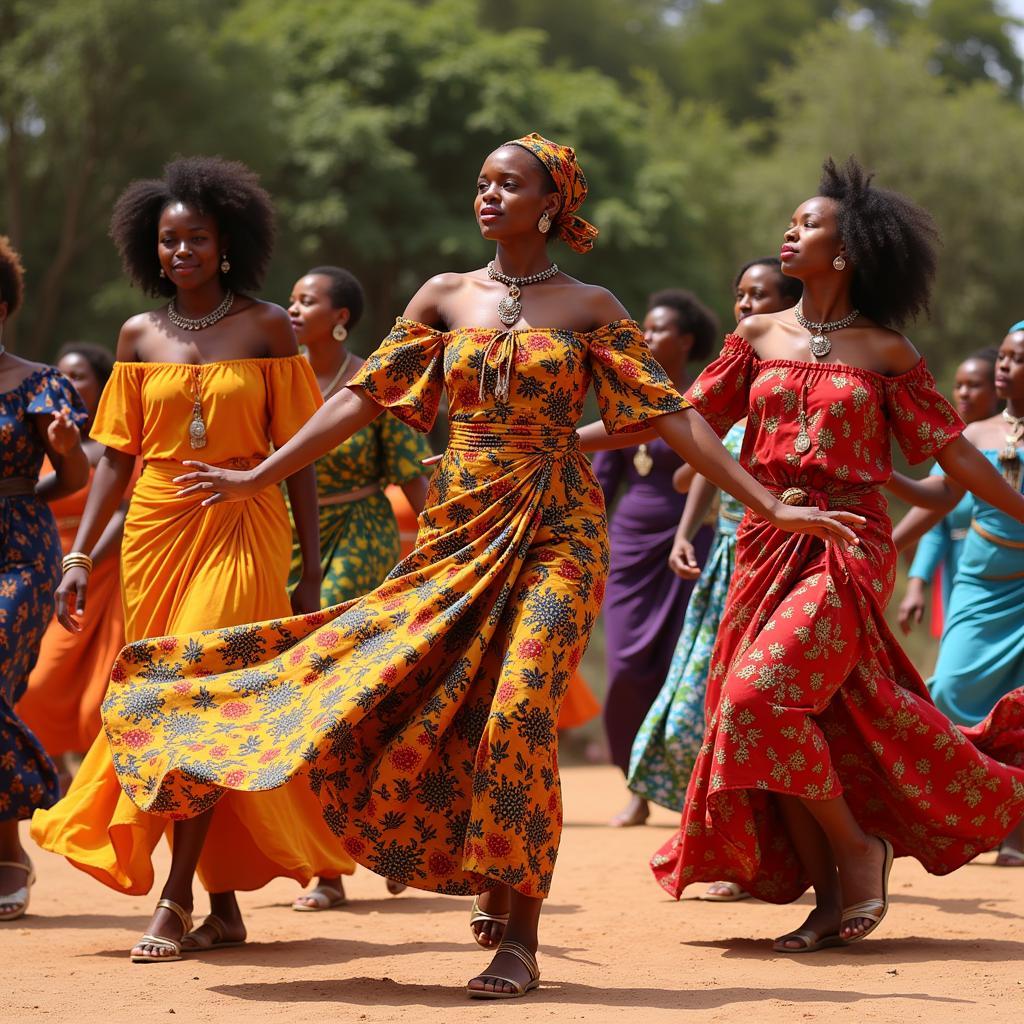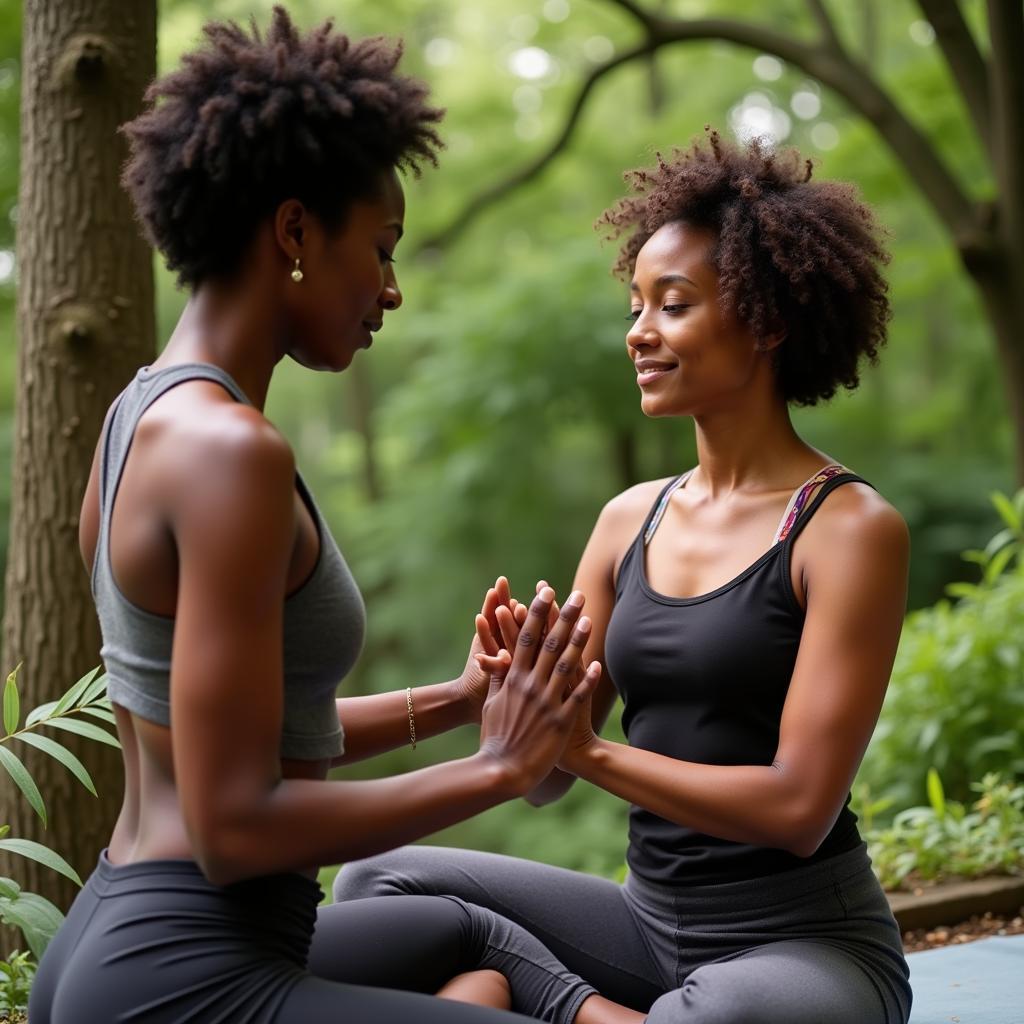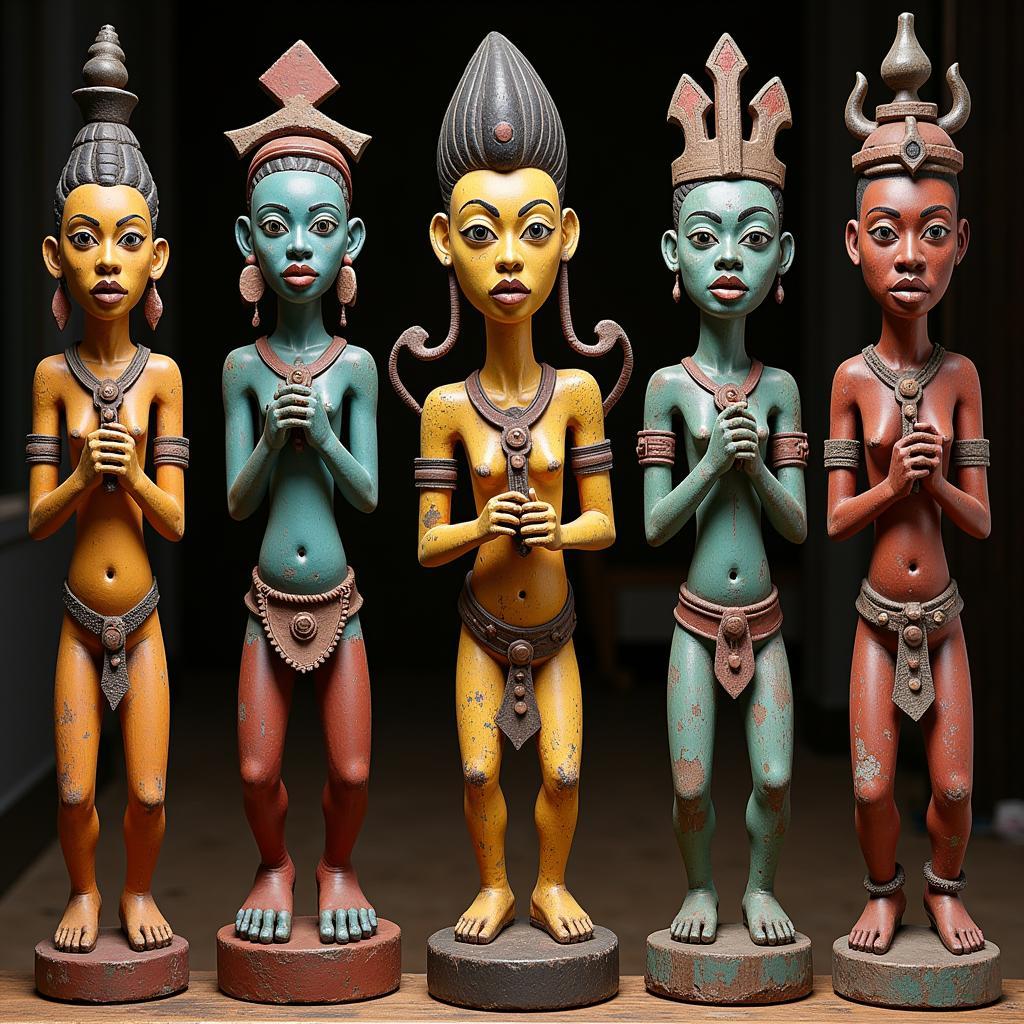The Mesmerizing World of African Dance Performance
African Dance Performance is more than just rhythmic movement; it’s a vibrant tapestry woven from the threads of history, culture, and spirituality. Each dance tells a story, expressing emotions, rituals, and societal values passed down through generations. From the energetic leaps of Maasai warriors to the graceful movements of West African dancers, the diversity of styles reflects the vast cultural landscape of the continent.
Unveiling the Power and Purpose: What Makes African Dance Performance Unique?
African dance is inherently polycentric, meaning movement involves multiple body parts in intricate coordination. This dynamic approach creates a visually captivating spectacle, engaging the audience with its raw energy and rhythmic complexity.
But beyond its aesthetic appeal, African dance performance serves a deeper purpose. It’s a conduit for:
- Storytelling: Dances narrate myths, legends, historical events, and everyday experiences.
- Rituals: Birth, death, marriage, and rites of passage are often marked by specific dance forms.
- Social Commentary: Dances can express social and political messages, celebrating heroes or critiquing injustice.
- Healing and Spirituality: Movement is often intertwined with spiritual beliefs, invoking deities or seeking ancestral guidance.
A Journey Through Diversity: Exploring Different Styles of African Dance Performance
With 54 countries and thousands of ethnic groups, Africa boasts a kaleidoscope of dance styles. Each region has developed its unique forms, influenced by its history, environment, and cultural practices.
Here are a few captivating examples:
-
Gumboot Dance (South Africa): Originating from the gold mines of South Africa, this dance utilizes wellington boots to create rhythmic stomps and claps, expressing the hardships and resilience of the miners.
-
Agbekor (Ghana): A war dance of the Ewe people, Agbekor is characterized by its fast-paced movements, energetic jumps, and the use of traditional drums and gongs.
-
Ndlamu (Zulu, South Africa): Often performed by men, this powerful dance involves high kicks, stomping, and intricate footwork, showcasing strength, agility, and warrior spirit.
-
Moribayasa (Mali): A vibrant dance form of the Mande people, Moribayasa celebrates femininity, grace, and beauty. Women adorned in colorful dresses move with fluid elegance, their steps reflecting the rhythm of the music.
 Graceful Moribayasa Dance in Mali
Graceful Moribayasa Dance in Mali
These examples are just a glimpse into the diverse world of African dance performance. Each style offers a unique window into the cultural richness and artistic brilliance of the continent.
Beyond the Steps: The Significance of Music and Costume in African Dance Performance
Music and costume are integral elements of African dance performance, amplifying the emotional impact and cultural significance.
- The Language of Rhythm: Traditional instruments like drums, xylophones, and string instruments provide the pulsating heart of the performance. The music dictates the rhythm and tempo, creating a powerful synergy between sound and movement.
- Costumes as Cultural Markers: From elaborate headdresses to intricately beaded skirts, costumes play a crucial role in conveying cultural identity, social status, and the narrative of the dance. Colors, patterns, and materials hold symbolic meanings, adding layers of depth to the performance.
Experiencing the Magic: Where to Witness Authentic African Dance Performances
For a truly immersive experience, nothing compares to witnessing an African dance performance live. Here are a few avenues to explore:
- Cultural Festivals: Many African countries host annual festivals that celebrate their heritage through dance, music, and art.
- Local Communities: Connecting with local communities offers a chance to witness traditional dances in their authentic context.
- Dance Schools and Companies: Numerous schools and companies across Africa and the diaspora offer classes, workshops, and performances.
Conclusion: A Celebration of Life, Heritage, and Human Expression
African dance performance is a vibrant testament to the enduring power of human creativity and cultural expression. Its captivating rhythms, dynamic movements, and profound symbolism continue to enthrall audiences worldwide. By delving deeper into this captivating art form, we gain a richer understanding of African cultures and the universal language of dance.


